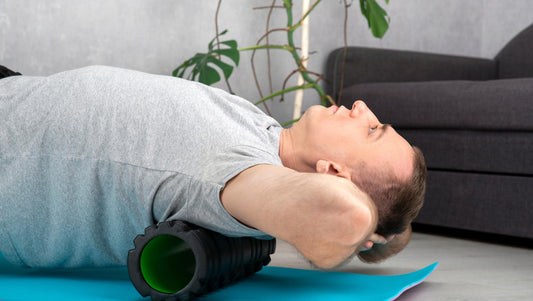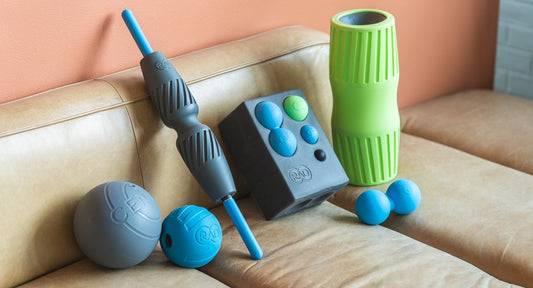The roller works well, but one of the handle parts got bent during shipping. It must've taken quite a hit, as the mechanism seems really sturdy.

THE BEST WAY TO PREDICT YOUR FUTURE IS TO CREATE IT

Yoga Studio Etiquette: How to Make Your Practic...
Yoga is not just about physical movement; it's also about creating a space of mindfulness, respect, and community. Whether you're a seasoned yogi or a beginner, understanding yoga studio etiquette...
Yoga Studio Etiquette: How to Make Your Practic...
Yoga is not just about physical movement; it's also about creating a space of mindfulness, respect, and community. Whether you're a seasoned yogi or a beginner, understanding yoga studio etiquette...

How to Perform Myofascial Release Upper Back
What is SMR? Myofascial release, or self-myofascial release (MFR/SMR), is a therapeutic technique that targets the fascia. Fascia is a connective tissue surrounding all your muscle fibers. SMR treatments help...
How to Perform Myofascial Release Upper Back
What is SMR? Myofascial release, or self-myofascial release (MFR/SMR), is a therapeutic technique that targets the fascia. Fascia is a connective tissue surrounding all your muscle fibers. SMR treatments help...

Yoga vs Lifting Weights: Finding the Right Bala...
In the ever-evolving world of fitness, two popular yet distinct practices often take the spotlight: yoga and strength training. Each has its own unique benefits and appeals, attracting a wide...
Yoga vs Lifting Weights: Finding the Right Bala...
In the ever-evolving world of fitness, two popular yet distinct practices often take the spotlight: yoga and strength training. Each has its own unique benefits and appeals, attracting a wide...

The Best Foam Roller for Muscle Recovery: Exper...
How to Use Foam Rollers for Optimal Muscle Relief and Recovery Soreness is something we all wish we could avoid. Whether you’re changing up your fitness program, or starting a...
The Best Foam Roller for Muscle Recovery: Exper...
How to Use Foam Rollers for Optimal Muscle Relief and Recovery Soreness is something we all wish we could avoid. Whether you’re changing up your fitness program, or starting a...

7 Reasons Why You Need to Throw Out the Foam Ro...
We sat down with our Director of Education, Kevin Hendry, to get his perspective on the Axle’s mind blowing amazing-ness. Read on for his pointers on integrating the Axle into...
7 Reasons Why You Need to Throw Out the Foam Ro...
We sat down with our Director of Education, Kevin Hendry, to get his perspective on the Axle’s mind blowing amazing-ness. Read on for his pointers on integrating the Axle into...

The Gentle Revolution: Ancient Skincare Techniq...
Whether you came here today to seek out the best methods for anti-aging, advice for how to keep your skin smooth, or are just looking for a killer facial massage...
The Gentle Revolution: Ancient Skincare Techniq...
Whether you came here today to seek out the best methods for anti-aging, advice for how to keep your skin smooth, or are just looking for a killer facial massage...


NEW & IMPROVED RAD MOBILITY APP
Si ia ne confes veri perei issi coerium cristraes firibef acrenati, esciam essentis consum dienter isuppli, ut L. Nostam trac rei cricaet oreis, quis plis etiurnu nimus, se in vid nostod. Si ia ne confes veri perei issi coerium cristraes firibef acrenati, esciam essentis consum dienter isuppli, ut L. Nostam trac rei cricaet oreis, quis plis etiurnu nimus, se in vid nostod Si ia ne confes veri perei issi coerium cristraes firibef acrenati, esciam essentis consum dienter isuppli, ut L. Nostam trac rei cricaet oreis, quis plis etiurnu nimus, se in vid nostod




















